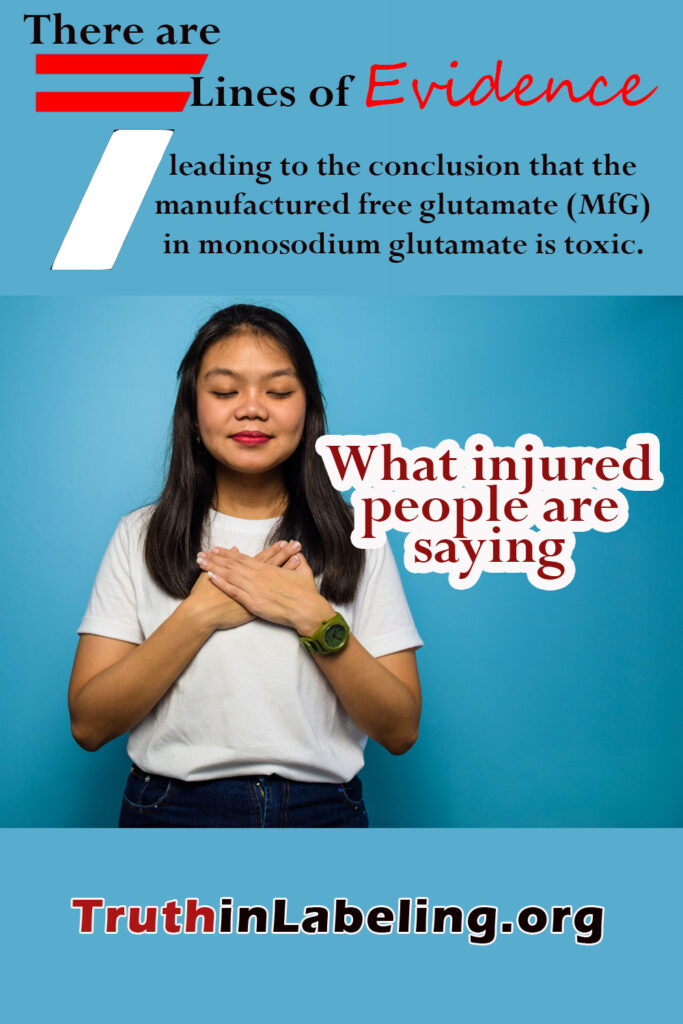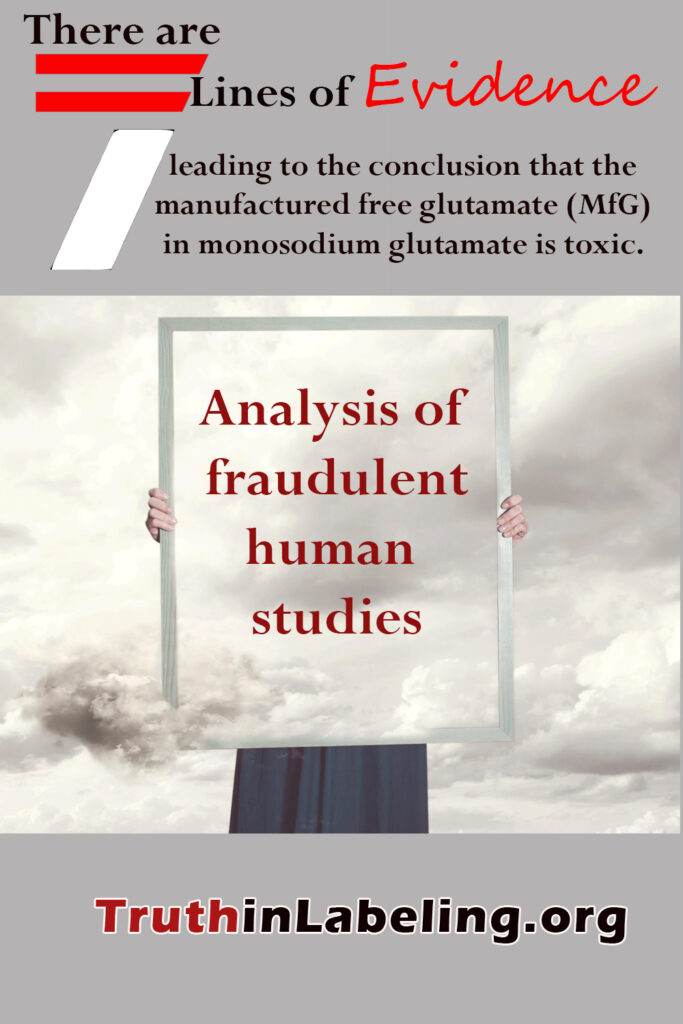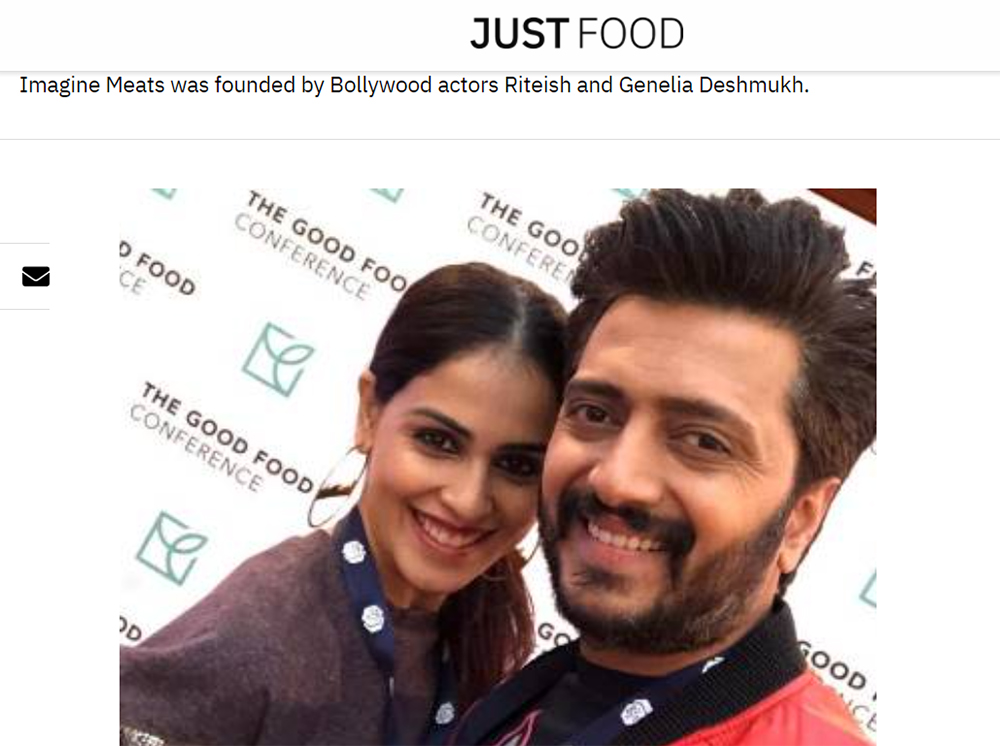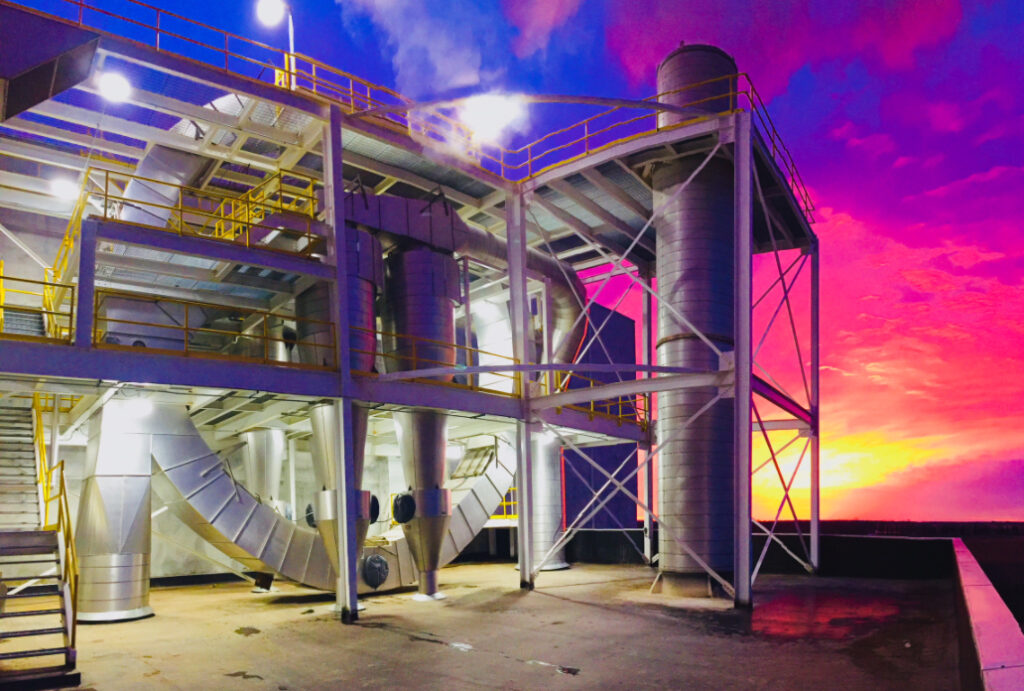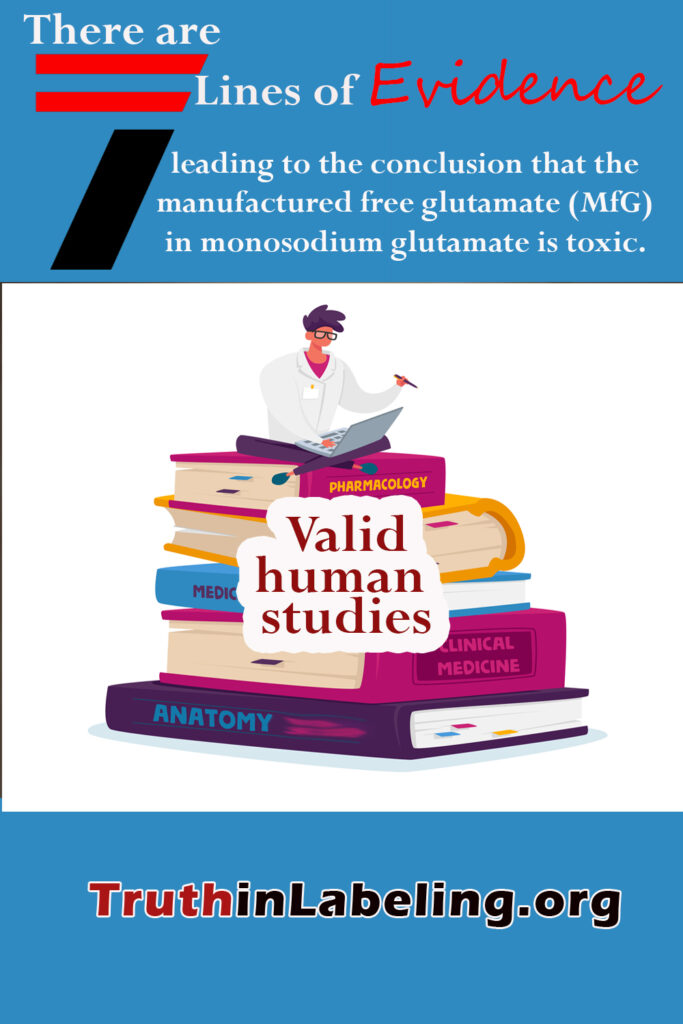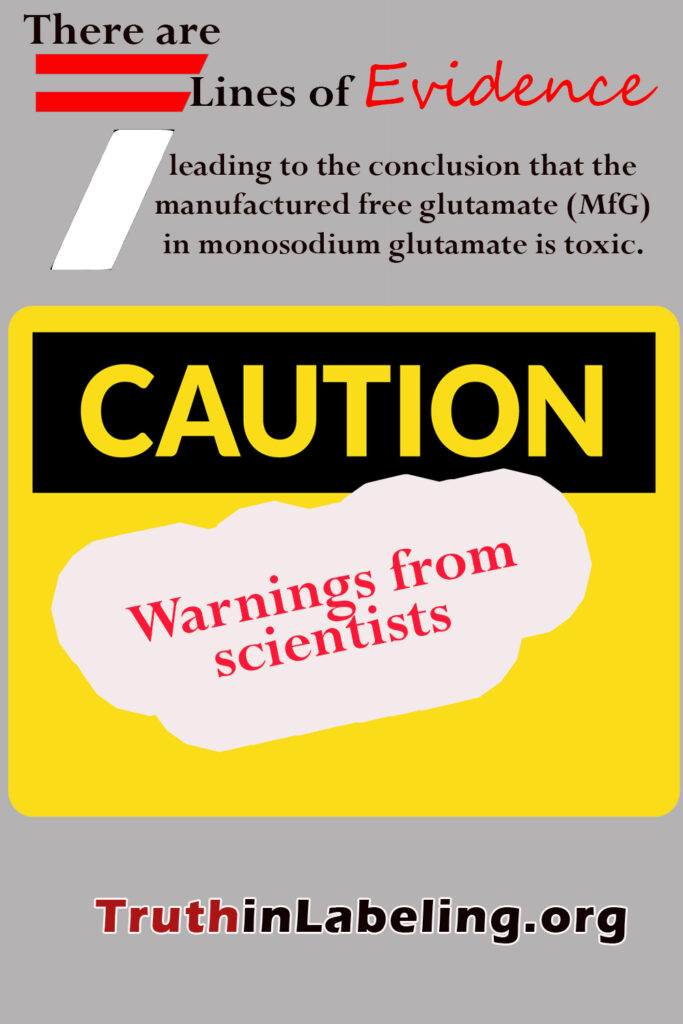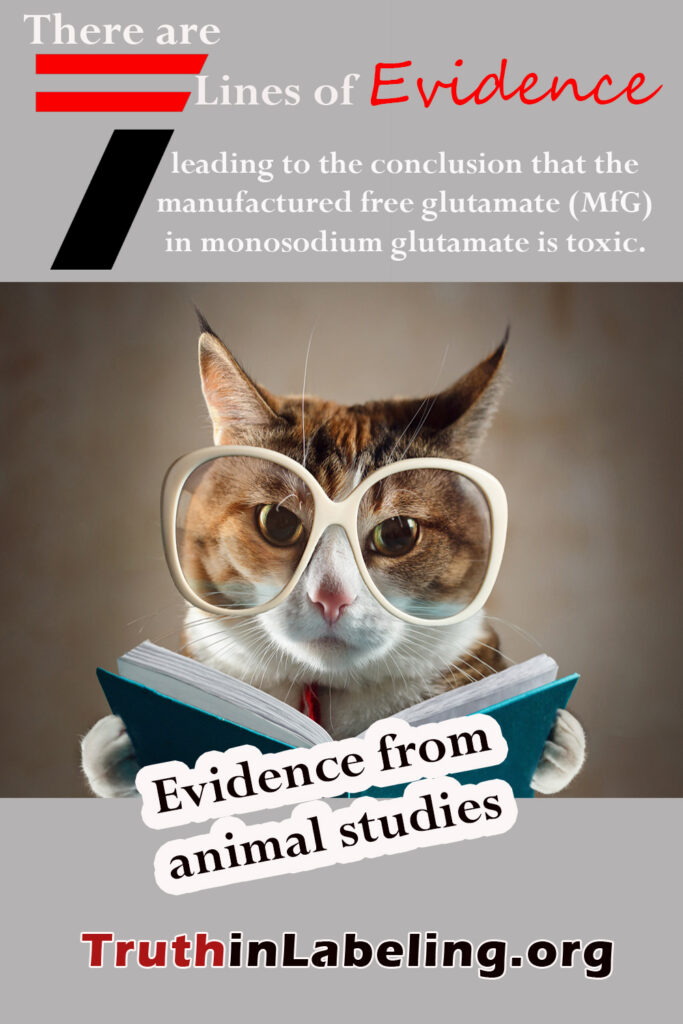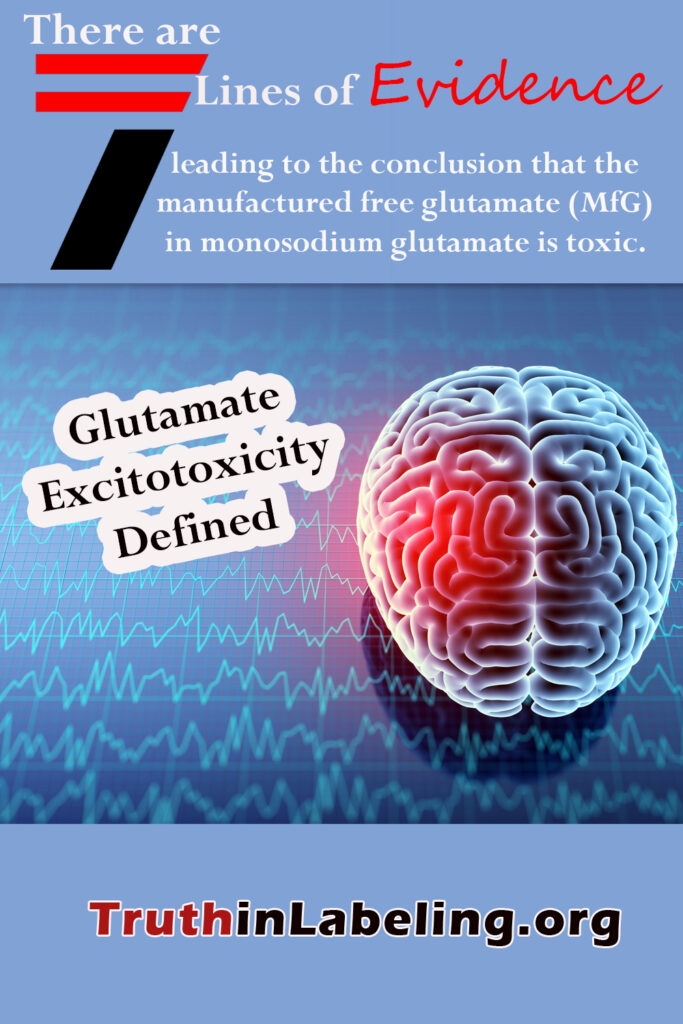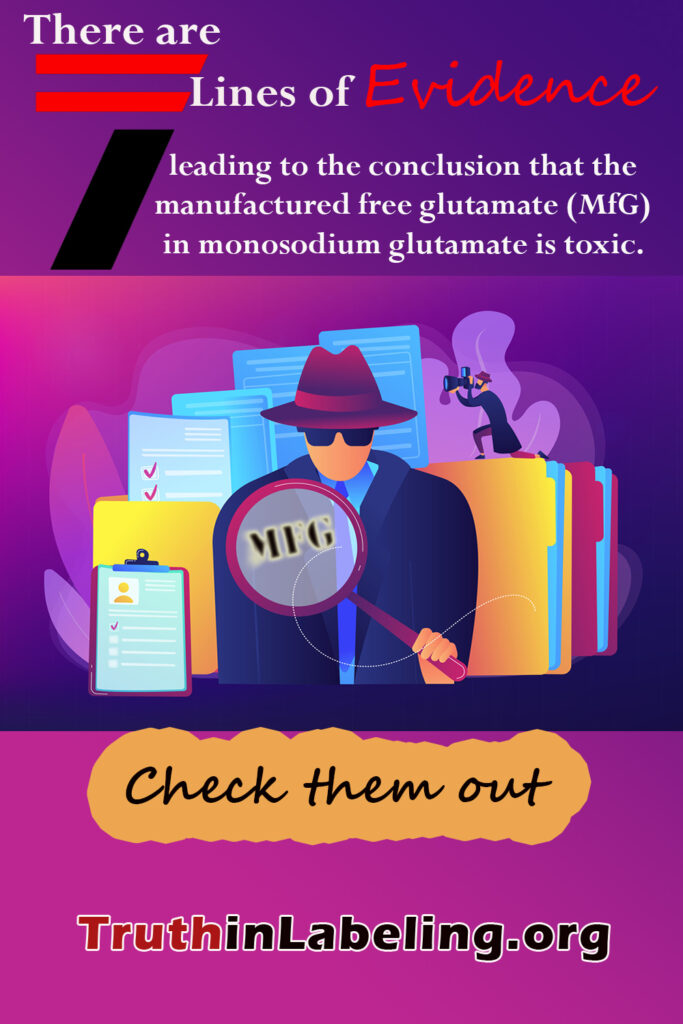In preceding weeks we presented seven lines of evidence pointing to the toxicity of manufactured free glutamate (MfG), the toxic component of monosodium glutamate (MSG). But despite this evidence, those charged with protecting the health of Americans continue to maintain that MfG and MSG in amounts readily available to consumers are “safe.” So, today we introduce you to the world of power and greed where the myths of MSG and MfG safety are kept alive – a world in which industry generated lies are parroted by media of every description, and truth has no value.
Not lines of evidence per se, but significant contributions to keeping the myth of MSG and MfG safety flowing in the media are the roles played by the U.S. Food and Drug Administration (FDA) and their related agencies, the legislators who fail to administer appropriate oversight of those agencies, and the misrepresentations, lies, and dirty tricks that make up the agenda of the glutamate industry as they promote sales of their toxic ingredient.
Roles played by the U.S. Food and Drug Administration (FDA) and related agencies:
https://www.truthinlabeling.org/assets/industrys_fda_final.pdf
Misrepresentations, lies, and dirty tricks that make up the agenda of the glutamate-industry as they strive to promote sales of their toxic ingredient:
“Arranged” testimony of “authoritative bodies” to the safety of MSG.
The reviews done by what the glutamate industry refers to as “major regulatory agencies worldwide, all of which have concluded MSG is a safe ingredient,” were all based on reports of studies brought to those agencies by The Glutamate Association, the International Glutamate Technical Committee, their agents, or the FDA which since 1968 has ignored all evidence to the contrary and supported the false claim that MSG is a “safe” ingredient.
The FDA’s 50-year incestuous relationship with Ajinomoto, manufacturer of MSG — with the FDA parroting Ajinomoto’s misleading statements and down-right lies.
https://www.truthinlabeling.org/assets/industrys_fda_final.pdf
The falsehood spun that the glutamate added to food and the glutamate found in plants and animals are identical.
Not all glutamate is created equal. Some was created when man was created. Some is manufactured.
Glutamate has 2 enantiomers. In chemistry, an enantiomer is one of two stereoisomers that are mirror images of each other that are non-superposable (not identical), much as one’s left and right hands are mirror images.
Glutamate exists in two forms: 1) as a stand-alone amino acid (free) and 2) as an amino acid bound with other amino acids in protein (bound).
Free glutamate, when present in “excess” (more than the body needs for normal function) causes adverse reactions and brain damage. Glutamate bound in protein does not. When present outside of protein in amounts that exceed what the healthy human body was designed to accommodate, glutamate becomes an excitotoxic neurotransmitter, firing repeatedly, damaging targeted glutamate-receptors and/or causing neuronal and non-neuronal death by over exciting those glutamate receptors until their host cells die.
Free glutamate is rarely found in nature. Protein, which is composed of bound glutamate and a variety of other bound amino acids, is found in nature. Protein that is eaten is digested into individual (free) amino acids at which time glutamate becomes vital for normal body function being both a building block of future protein and the principal neurotransmitter in humans, carrying nerve impulses from glutamate stimuli to glutamate receptors throughout the body.
Manufactured glutamate (which is always free glutamate) is not identical to glutamate found unadulterated in nature. Contrary to what the manufacturer of free glutamate would have you believe, manufactured free glutamate is not identical to glutamate found unadulterated in nature. Try as they might, no one has been able to manufacture L-glutamate (the enantiomer that has flavor-enhancing capability) without producing unwanted by-products of manufacture at the same time. So, while the L-glutamate molecule is the L-glutamate molecule regardless of how it came to be, when the body ingests manufactured glutamate it becomes burdened with the by-products of L-glutamate manufacture (referred to as impurities) which include D-glutamate, pyroglutamate, and other molecules depending on the materials used to produce the L-glutamate and the extent of its processing.
In the healthy body, the amount of glutamate available for use is highly regulated, but when something goes wrong and there is more glutamate available than is needed (when there is “excess” glutamate), glutamate neurotransmitters fire, damaging targeted glutamate-receptors and/or causing neuronal and non-neuronal death by over exciting those glutamate receptors until their host cells die.
Prior to Ajinomoto’s 1957 change in method for producing glutamate, it would have been rare for there to be sufficient glutamate in a normal diet to cause that glutamate to become excitotoxic. Today there is sufficient glutamate in processed and ultra-processed foods for glutamate to become excitotoxic if multiple servings of glutamate-containing foods are consumed during the course of a day.
It is not necessary for humans to ingest glutamate in food because the body can make the glutamate it needs from other amino acids.
If you have questions or comments, we’d love to hear from you. If you have hints for others on how to avoid exposure to MfG, send them along, too, and we’ll put them up on Facebook. Or you can reach us at questionsaboutmsg@gmail.com and follow us on Twitter @truthlabeling.




